Related Research Articles
Charlie Dog is an animated cartoon character in the Warner Brothers Looney Tunes series of cartoons. The character was featured in nine cartoons between 1941 and 1958. He is generally characterized as a friendly wise guy.

Merrie Melodies is an American animated comedy short film series distributed by Warner Bros. Pictures. It was part of the Looney Tunes franchise and featured many of the same characters. It originally ran from August 2, 1931, to September 20, 1969, during the golden age of American animation, though it was revived in 1979, with new shorts sporadically released until June 13, 1997. Originally, Merrie Melodies placed emphasis on one-shot color films in comparison to the black-and-white Looney Tunes films. After Bugs Bunny became the breakout character of Merrie Melodies and Looney Tunes transitioned to color production in the early 1940s, the two series gradually lost their distinctions and shorts were assigned to each series randomly.

The Goofy Gophers are animated cartoon characters in Warner Bros.' Looney Tunes and Merrie Melodies series of cartoons. The gophers are small and brown with tan bellies and buck teeth. They both have British accents. Unnamed in the theatrical cartoons, they were given the names Mac and Tosh in the 1960s TV show The Bugs Bunny Show. The names are a pun on the surname "Macintosh". They are characterized by an abnormally high level of politeness.
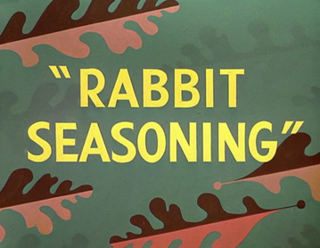
Rabbit Seasoning is a 1952 Warner Bros. Merrie Melodies cartoon directed by Chuck Jones. Released on September 20, 1952, the short stars Bugs Bunny, Daffy Duck and Elmer Fudd.

Duck! Rabbit, Duck! is a 1953 Warner Bros. Merrie Melodies cartoon directed by Charles M. Jones. The cartoon was released on October 3, 1953 and stars Bugs Bunny, Daffy Duck and Elmer Fudd.
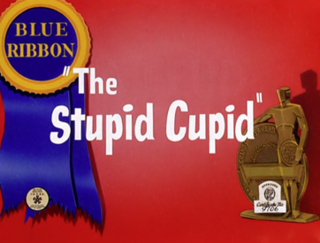
The Stupid Cupid is a 1944 Warner Bros. Looney Tunes animated cartoon directed by Frank Tashlin. The cartoon was released on November 25, 1944, and stars Daffy Duck and Elmer Fudd.
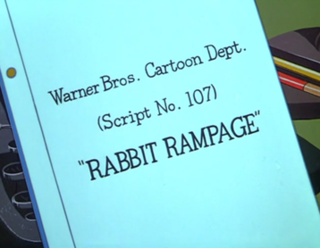
Rabbit Rampage is a 1955 Warner Bros. Looney Tunes animated cartoon, directed by Chuck Jones. The short was released on June 11, 1955, and stars Bugs Bunny.

Person to Bunny is a 1960 Merrie Melodies animated cartoon directed by Friz Freleng. The short was released on April 1, 1960, and stars Bugs Bunny, Daffy Duck and Elmer Fudd. It is the last cartoon to feature Arthur Q. Bryan as the voice of Elmer, and was released shortly after Bryan's death.

Daffy Duck Hunt is a 1949 Warner Bros. Looney Tunes cartoon, directed by Robert McKimson. The cartoon was released on March 26, 1949, and stars Daffy Duck, Porky Pig and Barnyard Dawg.
What Makes Daffy Duck is a 1948 Warner Bros. Looney Tunes cartoon directed by Arthur Davis. The cartoon was released on February 14, 1948, and stars Daffy Duck and Elmer Fudd.
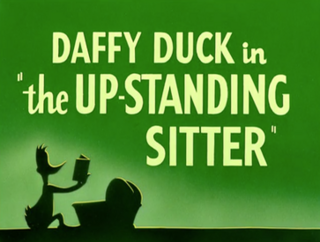
The Up-Standing Sitter is a 1948 Warner Bros. Looney Tunes cartoon, directed by Robert McKimson. The cartoon was released on July 3, 1948, and stars Daffy Duck. All voices are by Mel Blanc.

This Is a Life? is a 1955 Warner Bros. Merrie Melodies animated cartoon directed by Friz Freleng, written by Warren Foster, and produced by Edward Selzer, with music directed by Milt Franklyn. The short was released on July 9, 1955, and stars Bugs Bunny. The voices were performed by Mel Blanc, Arthur Q. Bryan, and June Foray in her first work for Warner Bros. This is one of the few Bugs Bunny cartoons whose title does not contain Bugs, bunny, rabbit/wabbit or hare.

To Duck or Not to Duck is a 1943 Warner Bros. Looney Tunes cartoon directed by Chuck Jones. The cartoon was released on March 6, 1943, and stars Daffy Duck and Elmer Fudd.
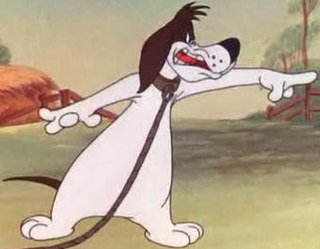
Barnyard Dawg is a Looney Tunes character. A feisty anthropomorphic basset hound, he is a friend and the archenemy of Foghorn Leghorn. He was created by Robert McKimson, who also created Foghorn, and was voiced by Mel Blanc. Dawg also feuds with other notable Looney Tunes characters as well, such as Henery Hawk, Daffy Duck and Sylvester. He appeared in 23 Golden Age–era Warner Bros. shorts.

Daffy Dilly is a 1948 Warner Bros. Merrie Melodies cartoon directed by Chuck Jones. The cartoon was released on October 30, 1948, and stars Daffy Duck.
Design for Leaving is a 1954 Warner Bros. Looney Tunes theatrical animated short directed by Robert McKimson. The cartoon was released on March 27, 1954 and stars Daffy Duck and Elmer Fudd. The title is a parody of the Design for Living House, House No. 4 in the Homes of Tomorrow Exhibition at the Century of Progress, the 1933 World's Fair in Chicago.
Wise Quackers is a 1949 Warner Bros. Looney Tunes cartoon directed by Friz Freleng. The film was released on January 1, 1949, and stars Daffy Duck and Elmer Fudd.
Cracked Quack is a 1952 Warner Bros. Merrie Melodies short directed by Friz Freleng. The cartoon was released on July 5, 1952, and stars Daffy Duck and Porky Pig. This cartoon is notable for being the final Porky Pig cartoon directed by Friz Freleng.
References
- 1 2 3 Webb, Graham (2011). The Animated Film Encyclopedia: A Complete Guide to American Shorts, Features and Sequences (1900-1999). McFarland & Company, Inc. p. 95. ISBN 978-0-7864-4985-9.
- ↑ Beck, Jerry; Friedwald, Will (1989). Looney Tunes and Merrie Melodies: A Complete Illustrated Guide to the Warner Bros. Cartoons. Henry Holt and Co. p. 304. ISBN 0-8050-0894-2.
- ↑ Lenburg, Jeff (1999). The Encyclopedia of Animated Cartoons. Checkmark Books. pp. 60–62. ISBN 0-8160-3831-7 . Retrieved 6 June 2020.